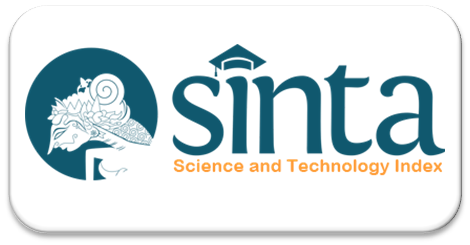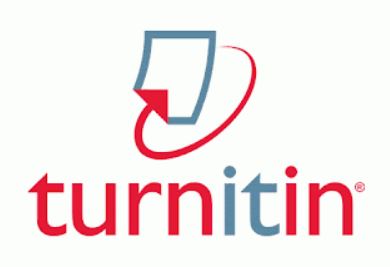A Case Study: Application of Kersen Leaf Extract (Muntingia Calabura L.) and Manuka Honey Ointment Combination On Second Degree Superficial Burns
DOI:
https://doi.org/10.35960/vm.v17i1.1302Keywords:
Burns, Wound Care, Kersen leaf extract, Manuka honey, combination ointmentAbstract
Background: Burns are a significant cause of morbidity and mortality globally. Intensive treatment is necessary to prevent infection and manage erythema in burn wounds. This case study aims to evaluate the effectiveness of a combination ointment containing Kersen (Muntingia calabura L.) leaf extract and Manuka honey in treating second degree superficial burns. Methods: A case study design employing evidence-based practice was used. Data were collected through interviews, observations, and physical examination. The study was conducted from October 14-28, 2023 in Mirikerep Hamlet, Pringsurat Village, Temanggung Regency, Indonesia. A comprehensive nursing care approach was implemented, including assessment, diagnosis, intervention, implementation, and evaluation. Results: Macroscopic examination revealed a significant reduction in wound area from 5.5x3 cm to 0.5x0.3 cm after treatment with the combination ointment. The ointment effectively promoted epithelialization and tissue regeneration in the healing process of second-degree superficial burns. Conclusions: The combination ointment containing Kersen leaf extract and Manuka honey demonstrates potential as an effective treatment for second degree superficial burns. Further research is warranted to elucidate the mechanisms underlying its therapeutic effects.
References
Ambiga, S., Narayanan, R., Gowri, D., Sukumar, D., & Madhavan, S. (2007). EVALUATION OF WOUND HEALING ACTIVITY OF FLAVONOIDS FROM IPOMOEA CARNEA Jacq. Ancient Science of Life, 26(3), 45–51. http://www.ncbi.nlm.nih.gov/pubmed/22557241%0Ahttp://www.pubmedcentral.nih.gov/articlerender.fcgi?artid=PMC3330873
Anita. (2021). ASUHAN KEPERAWATAN PADA GANGGUAN INTEGRITAS KULIT DENGAN INTERVENSI PERAWATAN LUKA DENGAN NaCl 0,9% DAN KASA DENGAN FRAMYCETIN SULFATE.
Arif, M. (2017). Pengaruh Madu Terhadap Luka Bakar. Medula, 7(5), 71–74.
Arumsari, A., Herawati, D., & Afrizal, M. (2012). Uji aktivitas antibakteri beberapa jenis madu terhadap Pseudomonas aeruginosa dan Staphylococcus aureus dengan metode difusi agar. Jurnal Ilmiah Farmasi Farmasyifa, 2(1), 26–32.
Dini, T. M. R., & Widada, W. (2023). Asuhan Keperawatan pada Pasien Luka Bakar Derajat II dengan Diagnosis Keperawatan Nyeri Akut. Health & Medical Sciences, 1(3), 1–6. https://doi.org/10.47134/phms.v1i3.49
Handayani, F., & Sentat, T. (2016). UJI AKTIVITAS EKSTRAK ETANOL DAUN KERSEN (Muntingia calabura L.) TERHADAP PENYEMBUHAN LUKA BAKAR PADA KULIT MENCIT PUTIH JANTAN (Mus musculus). Jurnal Ilmiah Ibnu Sina, 1(2), 131–142. https://doi.org/https://doi.org/10.36387/jiis.v1i2.43
Handayani, L. T. (2018). Study of research ethics in health by involving humans as subjects. The Indonesian Journal of Health Science, 10(1), 47–54.
Herlianita, R., Ruhyanudin, F., Wahyuningsih, I., Husna, C. H. Al, Ubaidillah, Z., Theovany, A. T., & Pratiwi, Y. E. (2020). Pengaruh pendidikan kesehatan terhadap sikap dan praktik pada pertolongan pertama penanganan luka bakar. Holistik Jurnal Kesehatan, 14(2), 163–169. https://doi.org/10.33024/hjk.v14i2.2825
Hertian, R., Muhaimin, & Sani K, F. (2021). Uji Efektivitas Ekstrak Daun Ekor Naga (Rhaphidohora pinnata (L.f) Schott) terhadap Penyembuhan Luka Sayat pada Mencit Putih Jantan. Indonesian Journal of Pharma Science, 1(1), 5–24.
Iacopetti, I., Perazzi, A., Martinello, T., Gemignani, F., & Patruno, M. (2020). Hyaluronic acid, Manuka honey and Acemannan gel: Wound-specific applications for skin lesions. Research in Veterinary Science, 129(January), 82–89. https://doi.org/10.1016/j.rvsc.2020.01.009
Kurniawan, S. W., & Susianti. (2017). Luka Bakar Derajat II-III 90% karena Api pada Laki-laki 22 Tahun di Bagian Bedah Rumah Sakit Umum Daerah Abdoel Moeloek Lampung. Jurnal Medula Unila, Volume 7,(2), 140.
Lien, L. T., Tho, N. T., Ha, D. M., Hang, P. L., Nghia, P. T., & Thang, N. D. (2015). Influence of phytochemicals in piper betle linn leaf extract on wound healing. Burns and Trauma, 3(23), 1–8. https://doi.org/10.1186/s41038-015-0023-7
Nadhilla, N. F. (2014). THE ACTIVITY OF ANTIBACTERIAL AGENT OF HONEY AGAINST Staphylococcus aureus Universitas Waikato di New Zealand. 3, 94–101.
Pastar, I., Stojadinovic, O., Yin, N. C., Ramirez, H., Nusbaum, A. G., Sawaya, A., Patel, S. B., Khalid, L., Isseroff, R. R., & Tomic-Canic, M. (2014). Epithelialization in Wound Healing: A Comprehensive Review. Advances in Wound Care, 3(7), 445–464. https://doi.org/10.1089/wound.2013.0473
Purba, V. M., & Suherni. (2021). Perawat Tentang Perawatan Luka dengan Teknik Perawatan Luka Post Operasi Apendiks di RSU Mitra Medika Medan. Jurnal Keperawatan Flora, 14(2), 52–59.
Wahyuningtyas, E. S., Putri, I. K., & Nasruddin. (2017). Efektivitas Perlakuan Kombinatif Plasma Medis, Madu dan Pembalut Luka Berlubang Banyak Untuk Penyembuhan Luka. Universiity Research Colloquim, 9, 99–106.
Wang, Y., Beekman, J., Hew, J., Jackson, S., Issler-Fisher, A. C., Parungao, R., Lajevardi, S. S., Li, Z., & Maitz, P. K. M. (2018). Burn injury: Challenges and advances in burn wound healing, infection, pain and scarring. Advanced Drug Delivery Reviews, 123, 3–17. https://doi.org/10.1016/j.addr.2017.09.018
Zwierełło, W., Piorun, K., Skórka-Majewicz, M. S.-M., Maruszewska, A., Antoniewski, J., & Gutowska, I. G. (2023). Burns : Classification , Pathophysiology , and Treatment : A Review. International Journal of Molecular Sciences. https://doi.org/https://doi.org/10.3390/ ijms24043749
Downloads
Published
How to Cite
Issue
Section
License
Copyright (c) 2024 Shella Oktavia Cahyaningrum, Estrin Handayani, Eka Sakti Wahyuningtyas, Ratna Wijayatri

This work is licensed under a Creative Commons Attribution 4.0 International License.
Submitted paper will be firstly reviewed by the editors to determine whether the paper meet the edition theme and submission guidelines. Papers which meet the theme and the guidelines will be assigned to selected reviewers for peer-reviews. Viva Medika: Jurnal Kesehatan, Kebidanan dan Keperawatan is a double blind peer-reviewed journal which involves reviewers based on their experties relevant to the topic of the paper. Final decision of paper acceptance is solely decided by the editors according to reviewers' comment.
Plagiarism and self-plagiarism are prohibited. Viva Medika: Jurnal Kesehatan, Kebidanan dan Keperawatan uses PlagiarismCheckerX and iThenticate to scan papers for detecting plagiarism. Thus, Appropriate citation and quotation should be used

.png)








